 This marks the third state entry in the State-By-State series. If you’d like to get some background on the purpose and scope of this series, you can read the initial entry in the State-By-State series by clicking here. Over time, there may be a need to go back and revise the individual state entries in order to add new information or correct the information that is already posted, so if you’re interested in a particular state, be sure to check back from time to time to see if there are any updates.
This marks the third state entry in the State-By-State series. If you’d like to get some background on the purpose and scope of this series, you can read the initial entry in the State-By-State series by clicking here. Over time, there may be a need to go back and revise the individual state entries in order to add new information or correct the information that is already posted, so if you’re interested in a particular state, be sure to check back from time to time to see if there are any updates.Arizona is another state for which there has been some worthwhile and very useful CCC research done in the not too distant past, most notably Robert Moore’s book on the CCC in Arizona’s Rim Country, which we’ll touch on in a moment.
First, let’s start with some statistics from Perry Merrill’s book Roosevelt’s Forest Army. Merrill notes that the number of individual camps in the state of Arizona numbered about fifty and that the aggregate number of Arizona men who were given work as a result of the CCC stands at 41,363. Between 1933 and 1942, CCC enrollees in Arizona strung 3,559 miles of telephone lines, built 512,093 erosion control check dams and planted an astounding 7.4 million trees! Merrill
 also briefly notes the work of the CCC in Phoenix, Tucson, Colossal Cave and the Hualpai Mountains though an error in the text makes it seem that the Hualapai Mountains are in or near Tucson, when in fact they are in the opposite corner of the state, near Kingman, Arizona. (You’ll also note the various spellings of “Hualapai”.)
also briefly notes the work of the CCC in Phoenix, Tucson, Colossal Cave and the Hualpai Mountains though an error in the text makes it seem that the Hualapai Mountains are in or near Tucson, when in fact they are in the opposite corner of the state, near Kingman, Arizona. (You’ll also note the various spellings of “Hualapai”.)For many years and importantly during the Great Depression, Arizona had a wonderful advocate in the person of Senator Carl Hayden. To read about the creation of the CCC camps at Phoenix South Mountain Park – including Senator Hayden’s role in the effort – click on my previous post about the CCC at South Mountain Park. It is safe to say that were it not for Senator Hayden, Phoenix would not have gotten at least two of the CCC camps that it was allotted during the 1930s. One can only imagine what other help Senator Hayden provided to insure the success of the CCC in Arizona.
 The CCC also worked at Papago Park, another park located in the Phoenix metropolitan area. Lesser known though vaguely referenced in Roosevelt’s Forest Army, is the work at Hualapai Mountain Park near Kingman, Arizona. You can see an all too brief history of the park by clicking on the Mojave County Parks website here. The 1936 Phoenix District Annual reported that at that time Company 1837 was working at camp SP-8-A in the “Hualpai” Mountains. Prior to arriving near Kingman, Company 1837 worked at SP-1-A in Randolph Park near Tucson and then camp SP-6-A in Tucson’s Rincon Mountains. (The black and white photos of SP-8-A in this post are from that 1936 District Annual.) Given the fact that the place owes its existence to the CCC, more could be done to document and report on the work of the CCC at Hualapai Mountain Park.
The CCC also worked at Papago Park, another park located in the Phoenix metropolitan area. Lesser known though vaguely referenced in Roosevelt’s Forest Army, is the work at Hualapai Mountain Park near Kingman, Arizona. You can see an all too brief history of the park by clicking on the Mojave County Parks website here. The 1936 Phoenix District Annual reported that at that time Company 1837 was working at camp SP-8-A in the “Hualpai” Mountains. Prior to arriving near Kingman, Company 1837 worked at SP-1-A in Randolph Park near Tucson and then camp SP-6-A in Tucson’s Rincon Mountains. (The black and white photos of SP-8-A in this post are from that 1936 District Annual.) Given the fact that the place owes its existence to the CCC, more could be done to document and report on the work of the CCC at Hualapai Mountain Park.A thumbnail sketch of the places where the CCC worked in Arizona would look something like this:
Multiple improvements like roads, ramadas and lookout structures at both Phoenix South Mountain Park and Papago Park, infrastructure and aesthetic improvements at Grand Canyon, both on the North and South Rims and down in the Canyon. Additionally, upgrades and improvements to the irrigation system in the metro Phoenix area and in the area around Yuma, erosion control work throughout the state, significant improvements at Colossal Cave and Chiricahua National Monument in southeastern Arizona, immeasurable improvements to the forest lands across the state and work at Petrified Forest.
Two books come to mind when discussing the work of the CCC in Arizona: Louis Lester Purvis’ wonderful book The Ace in the Hole: A Brief History of Company 818 of the Civilian Conservation Corps (1989) and Robert J. Moore’s more recent, more scholarly book The Civilian Conservation Corps in Arizona’s Rim Country: Working in the Woods (2006). Purvis’ book on the work of the CCC at Grand Canyon stands head and shoulders above other Arizona-related works because it is the only published text that is a personal narrative penned by a CCC veteran who worked in Arizona and I’ve been remiss in not posting a detailed review of it here or at the Forest Army blog. To read an earlier posting I did for Moore’s book, over at Forest Army click here. Bottom line: If you’re doing research on the work of the CCC in Arizona, these two books will be an important resource for you.
Other equally important if less in-depth coverage of CCC work in Arizona can be found in Sharon Hunt’s Images of America book entitled Vail and Colossal Cave Mountain Park and Donna and George Hartz’s Images of America book entitled The Phoenix Area’s Parks and Preserves, both published by Arcadia Publishing. (Any time to encounter an Arcadia Publishing Images of America title, be sure to scan through it for images and references to the CCC – you’ll be surprised at how often these titles include references to work done by the Forest Army during the 1930s.) Elsewhere, you’ll find references to the CCC in Letters from Wupatki by Courtney Reeder Jones and Bradford Luckingham’s Phoenix: A History of a Southwestern Metropolis. (Admittedly, the single reference to the CCC in Luckingham is a bit thin but the book also provides useful insight into life in Phoenix during the New Deal era.)

To view all of the Arizona-related posts over at the Forest Army blog, click here.
Interest in the work of the CCC in Arizona remains strong and the Arizona State Archives now maintains a set of all available issues of the CCC newspaper Happy Days on microfilm.
The map for this post (as with all maps used thus far) comes from a map of camp locations published in Cohen’s The Tree Army. The color photo of the CCC-built cabin comes from the Mojave County Parks website and the black and white images of the CCC camp at Hualpai Mountain Park are from the 1936 Phoenix District Annual.

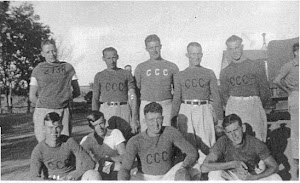

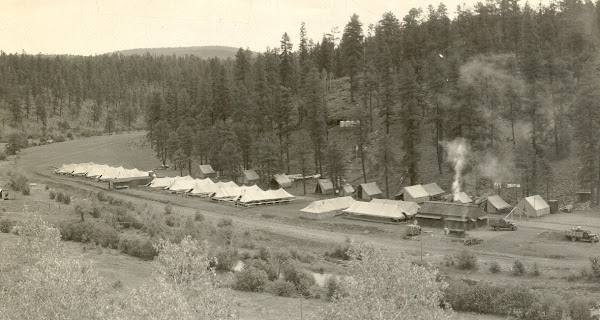
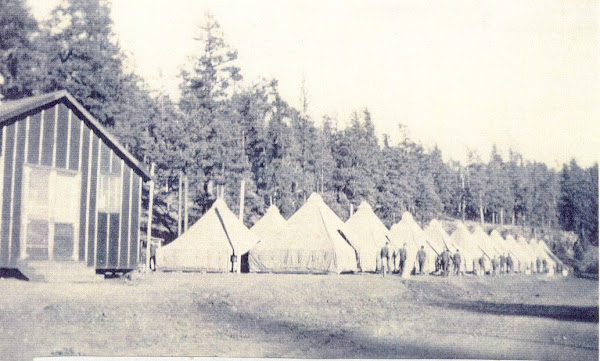
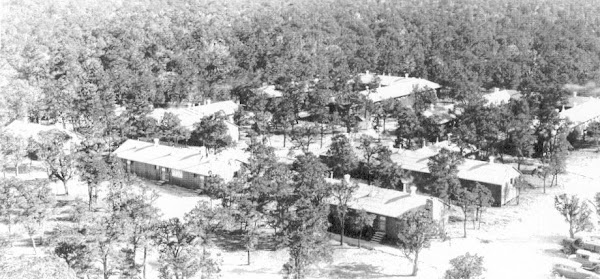
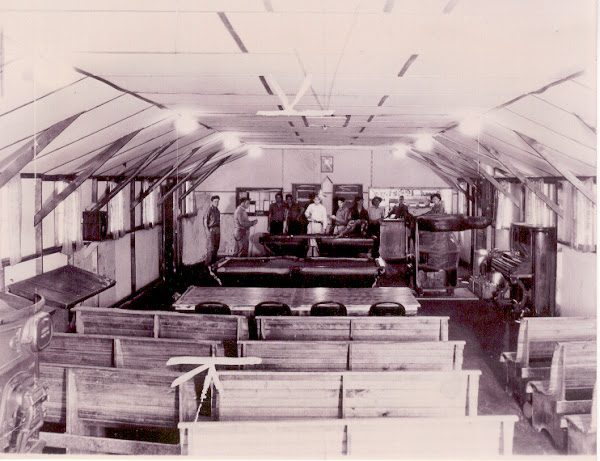
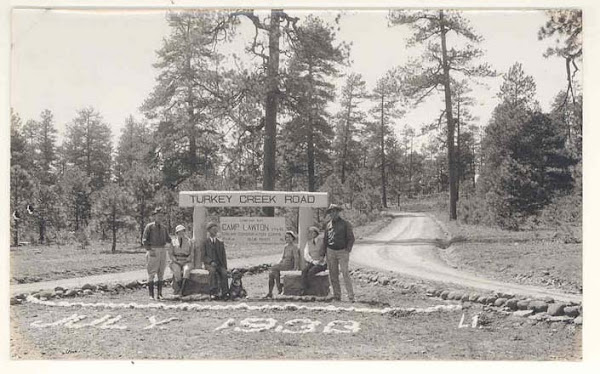
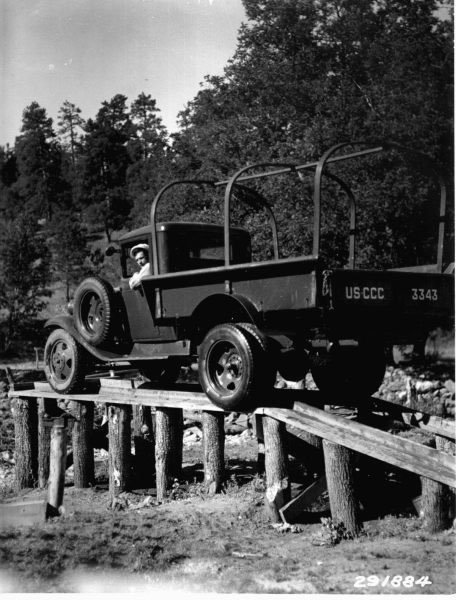
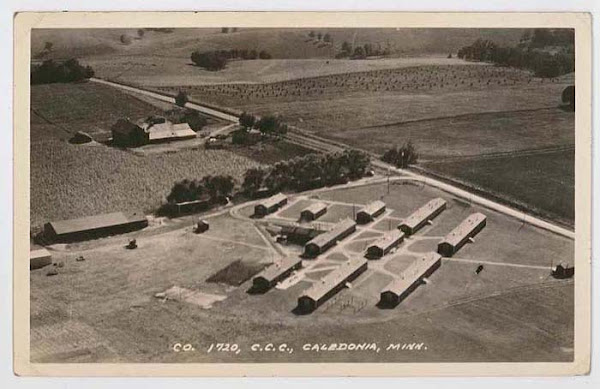
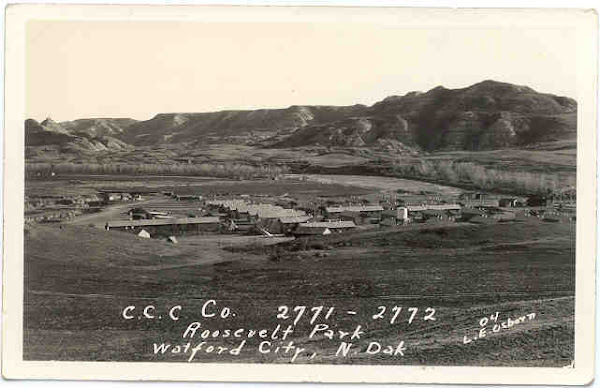
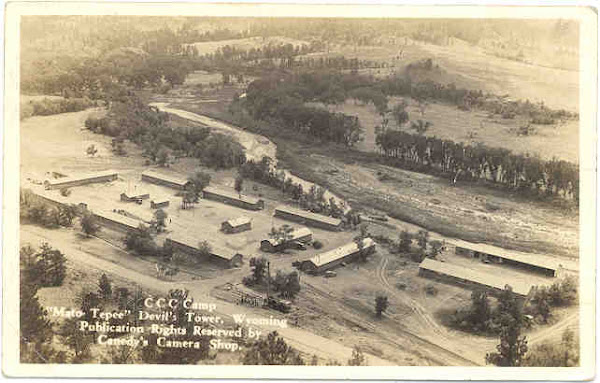
9 comments:
Looking for info re my dad Harry McLaughlin. Ran the mule supply train down to Phantom Ranch site in Grand Canyon.
Hi Reenie, if you'll post your email address I'll put you in touch with a retired Grand Canyon Park Ranger who's written a history of the CCC at GC - he may have info or he'll definitely know where to direct you for the details. I won't publish the comment with your email address in it but I'll need it in order to reach you with the information.
Hi there, thanks for this blog. I'm looking for information about my grandfather, Manuel Espinosa, who died in 1936 while working for the CCC. He was at a camp somewhere near Tuscon.
Hi Deborah,
I have record of a Manuel Espinosa who died of heat stroke on June 18, 1936. Place of death is listed as Safford. It appears from the death certificate that he was employed as a worker for the Soil Conservation Service (SCS) and since he is listed as having been married, I must presume that if he was working in a CCC camp he was a foreman or local experienced man (LEM) and not an enrollee. If you leave another post with your email or other contact info, I can sent you the certificate and I'll look into what camp he might have worked at if it was CCC. I don't publish posts with emails or personal information in them unless the poster requests it so you contact info wouldn't be public.
looking for some kind of info on my grandfather and his brother Jim Pingleton or Warren Pingleton all I know is they worked making trails or something in Grand Canyon
Hi, I am trying to find history on my dad, Juan S. Martinez (approximate time of service 1939 to 1941). He was 21 yrs, single, and from Laredo TX. When he left he went into the army. I found old postcards showing a return address in Safford AZ. Could you provide information about what he did during his time with CCC? Thanks, Sandy Velasco
Hello Sandy Velasco. Thank you for leaving a note. I have some information on the camp at Safford and a company roster from the Springerville camp on which are listed several enrollees by the name of Martinez, J. (But none with the middle initial listed as "S".) If you'll leave your email address in a comment, I will contact you to see if we can figure out which camp your dad was in. (I won't publish the comment with your email address, but it's the best way to communicate with you.) I may have information that will at least give you some idea of what life was like for your dad during his time in Arizona.
Hi, looking for info regarding my Dad, John B. Mercado. He may have gone by the name Juan or Johnny. About 1938 He worked in a camp near Kingman, Hualapai, or Gold Road Arizona. He was about 18 or 19 years old at that time.
Hello Josie Manqueros Mercado! I found a "J. Mercado" from Tucson, Arizona, listed as a Leader in Company 1837, Camp SP-8-A, Kingman, Arizona in the 1936 Phoenix District CCC annual. If you'll post a comment with your email address, I will scan the pages and email them to you - I won't publish the comment with your email address so I'll be the only one with access.
Post a Comment